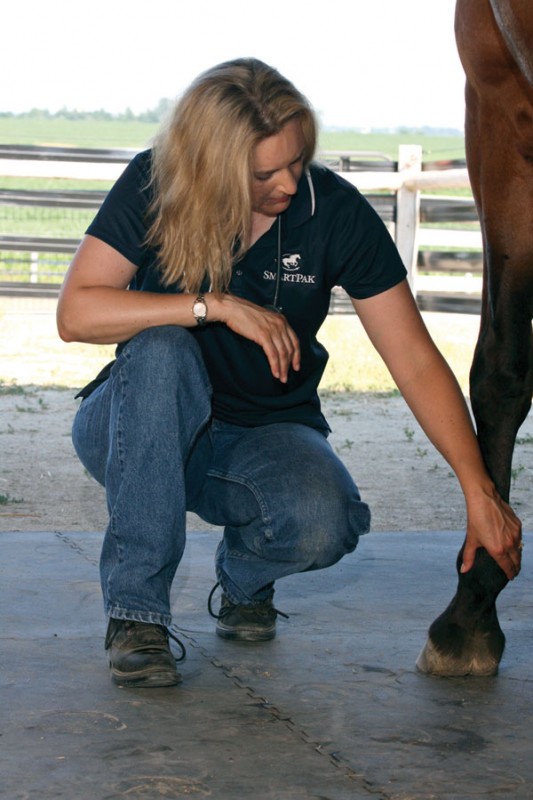Supplements for a Foundered Horse - Chronic Laminitis
Have you found any supplement that actually seems to help foundered horses? -Jan
Dear Jan,
 Founder (chronic laminitis) can be caused by so many different things it’s hard to make a blanket recommendation. Are you asking how to prevent it in an Equine Metabolic Syndrome or Cushing’s Disease horse, how to help treat it once it’s developed, or something else?
Founder (chronic laminitis) can be caused by so many different things it’s hard to make a blanket recommendation. Are you asking how to prevent it in an Equine Metabolic Syndrome or Cushing’s Disease horse, how to help treat it once it’s developed, or something else?
Anytime a horse has a hoof quality issue I think it’s a good idea to add a hoof supplement to the diet, so that the raw materials needed to build healthy hoof tissue (biotin, methionine, zinc and others) are present. So if you’re not already feeding your horse a hoof supplement think about adding one to his or her regimen. And certainly if you know what triggered the laminitis, remove the offending agent from the diet or environment and ask your veterinarian to suggest a nutrition, exercise and care program that reduces the risk of a repeat episode. Generally a low sugar/starch diet is recommended so instead of using grain to round out the hay-based diet (fresh pasture may not be appropriate either), select a multi-vitamin/mineral supplement or ration balancer instead. Finally, APF, which contains adaptogenic herbs, may be helpful in managing laminitic horses as it is said to “dial” the body back towards normal and assist in coping with stress.
There was a study presented a few years ago that showed a benefit to feeding essential fatty acids (both omega 3 and omega 6 fatty acids were used) to horses as a preventative to laminitis. Hopefully this answers your questions and provides a useful reference for you.
Essential Fatty Acid Supplementation as a Preventative for Carbohydrate Overload-Induced Laminitis
Kelly A. Neelley, DVM and Douglas J. Herthel, DVM
Essential fatty acid supplementation prevents laminitis in horses challenged with carbohydrate
overload. Possible mechanisms that would explain these findings include the known effects that
essential fatty acids have on inflammation, vasoconstriction, hypertension, and coagulation in
laboratory animals and man.
AAEP PROCEEDINGS / Vol. 43 / 1997